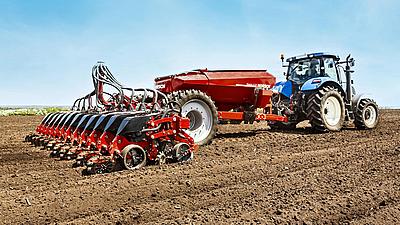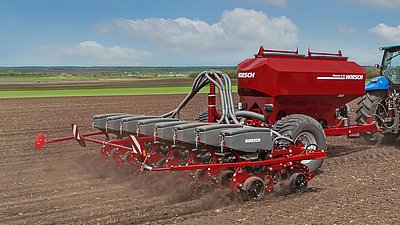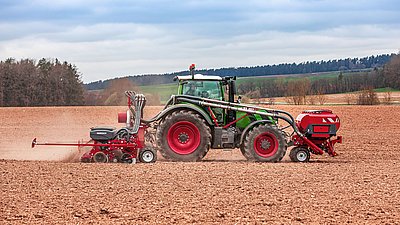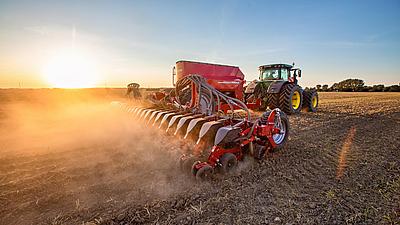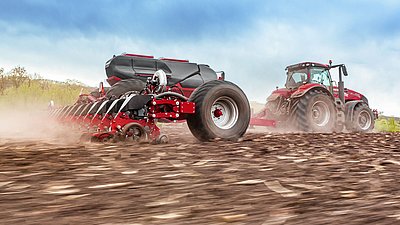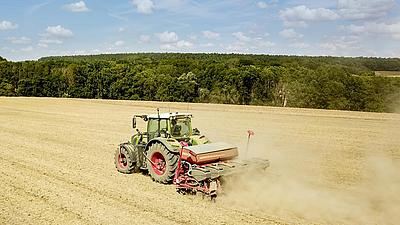Single grain seeding – The seeding method for optimum populations
Single grain seeding is mainly characterised by a precise seed placement and is used for crops the yields of which heavily depend on an even distribution in the standing area. Seeds are placed individually and with an even spacing in the seed furrow.
Single grain seeding is a form of row seeding where the row spacings vary depending on the crop. The distance between two grains is chosen in such a way that the growth conditions for the plant are optimised and that the competition between the plants is minimised.
The balanced distribution of the plants in the standing area allows for a significant reduction of the required seed quantity.
terraHORSCH:
New options: Maestro SV and SX
Blog articles:
Sowing fine seeds with the HORSCH Maestro
HORSCH Maestro Row Unit
Flexible use of single grain seeding for different crops
When seeding different crops, a single grain seed drill can be used in different situations. The traditional hoeing crops that are exclusively sown with a single grain seed drill include maize, beets and sunflowers.
The yield potential of these crops is highest if an optimum distribution in the standing area and an even embedding of the grain is ensured.
Coarse-grained legumes like field beans or soybeans are also sown with single grain seed drills more and more frequently. The singulation of rapeseed, too, becomes more and more popular.
The advantages of seeding with a single grain seed drill are the better depth placement, the targeted embedding of the grains and the saving of seed.
One machine for different soil conditions
The single grain seed drill can be used successfully in all cultivation systems. Inversion tillage with a plough is the least challenge for the seeding technology. The soil was intensively loosened before, and the organic plant residues were completely removed from the soil surface.
With mulch seeding however, plant residues remain on the soil surface as the soil generally is cultivated less than with inversion tillage.
Direct seeding makes the highest demands on the machine. The soil has not been cultivated before, and the organic plant residues remain on the surface. High coulter pressures are required to place the seed at the correct depth.
To be able to react appropriately to all conditions, the seed unit of a single grain seed drill can be equipped with different front tools. Trash wheels for example remove organic material from the zone of the seed furrow. With direct seeing, cutting discs loosen and open the seed furrow already before the actual seeding process.
The principle of a single grain seed drill: ideal conditions for optimum plant growth
The singulation of the seed is the core of a single grain seed drill. There are two common methods.
With vacuum singulation, the seed is sucked against a perforated disc and falls through a drop tube into the soil.
With overpressure singulation however, the grains are pressed to a perforated plate, caught by an airflow and shot into the soil. Then the seed is caught by a catching roller and pressed down for an ideal germination.
The V press wheels close the seed slot after the embedding and thus ensure optimum emergence conditions for the seedling.
Underground fertilisation: important for a good start
Ensuring an optimum nutrient supply is essential for the growth of the plant. Therefore, it makes sense to carry out an underground fertilisation directly when seeding. This is carried out by means of a separate fertiliser coulter that places the nutrients directly in the root area of the plant. Underground fertilisation encourages the root growth of the young plant and, due to the targeted and early nutrient supply, ensures a good youth development.












